Al-Muthanna University has put programs for recycling and treatment activities in progress. An encouragement to reduce paper and plastic usage has been conducted to the staff and students. This program is to establish specific bins and distribute them around the campuses to collect papers and plastic. The collected paper and plastic are sent to the factories out the campuses to recycle them. The sending processes depend on the supply and demand of the private factories and companies outside the university.
The other program is the treatment of sewage water. The university has established a project including the design and implementation of a station to treat the sewage water of the university. This station will treat the water and the outcomes will be fertilizers and used in irrigation applications. Therefore, the station will be an efficient symbol of the recycling process as a part of the waste section in the GreenMetric requirement. Some pictures are shown in the figures below to prove and describe details of the recycling program of the university waste.
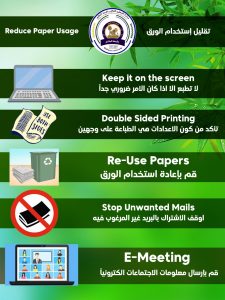


The leaders of Al-Muthanna University started from the president, V.P. for scientific and V.P. for administration, up to the head of the departments have put a very strict policy to reduce the usage of papers and plastics. The technology has significantly impacted the reducing papers, and a local network has been designed to connect all the offices inside the campuses, called “intranet”. In addition, the intranet’s network controlled all the mails and official documents and provided a chat choice among faculty and staff inside the campuses. These features of the intranet’s network have played an important role in reducing the usage of papers. For example, instead of printing a report or document and sending it to other offices in different colleges inside the campuses, this can be done using the intranet’s network without any paper.
For plastic, a policy has been established, including guidance ads in all the facilities of the campuses. These ads contained guidance on what to use instead of using plastic. For example, using a cartoon, metal, glass bottles and cans. Another example is using the paper bags and envelopes instead of plastic bags. Some pictures are shown in the figures below to prove and describe the details of these programs.

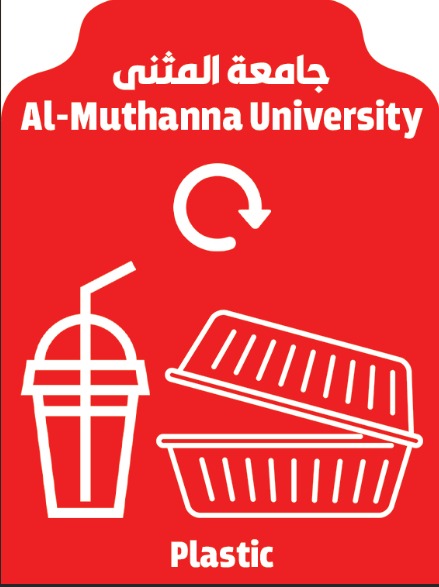
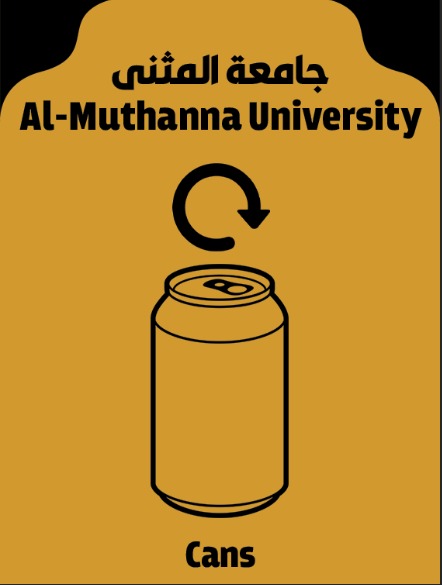
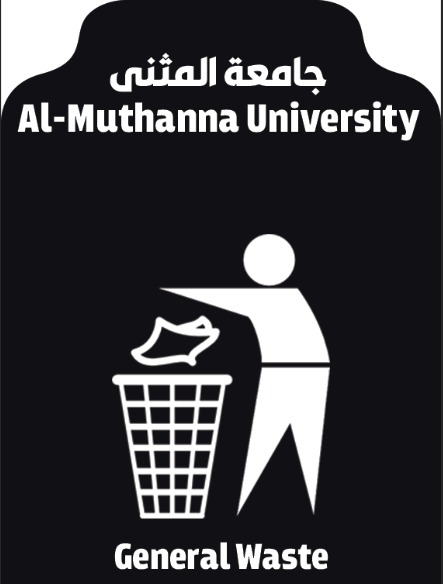
For organic waste treatment, a set of organic waste containers have been distributed at specific places of the university facilities. This activity is a part of the Al-Muthanna University program to collect organic waste. The collected organic waste is given to the municipality according to a deal to use as the primary material to produce the fertilizers. In addition, the good organic waste, especially food waste, is transferred to the agriculture station to feed animals. Moreover, posters are distributed to guide the university community in separating the organic waste from the others. Some pictures are shown in the figures below that express the distributed containers inside the campuses.
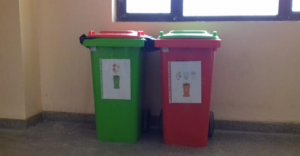

Al-Muthanna University has applied a program on inorganic waste. This program comes down to collecting inorganic waste such as plastic and classes in specific containers distributed in different places inside the campuses. Then, the waste collection is transferred to the municipality department according to a deal to use them in the recycling process. Some pictures of inorganic waste treatment in different places inside the campuses are shown in the figures below.
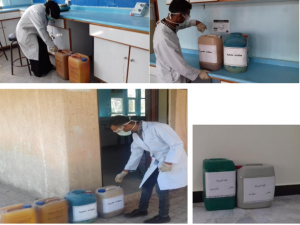
The treatment station is under construction, and about 80% of the accomplishment rate is completed, as mentioned in section 3.1. The mechanism of the treatment station is to treat sewage water, and the resolve is as follows:
- The first outcome is clean water used for agriculture in the green areas inside the school.
- Fertilizers are used for agriculture inside or outside the school based on the offer and demand.



